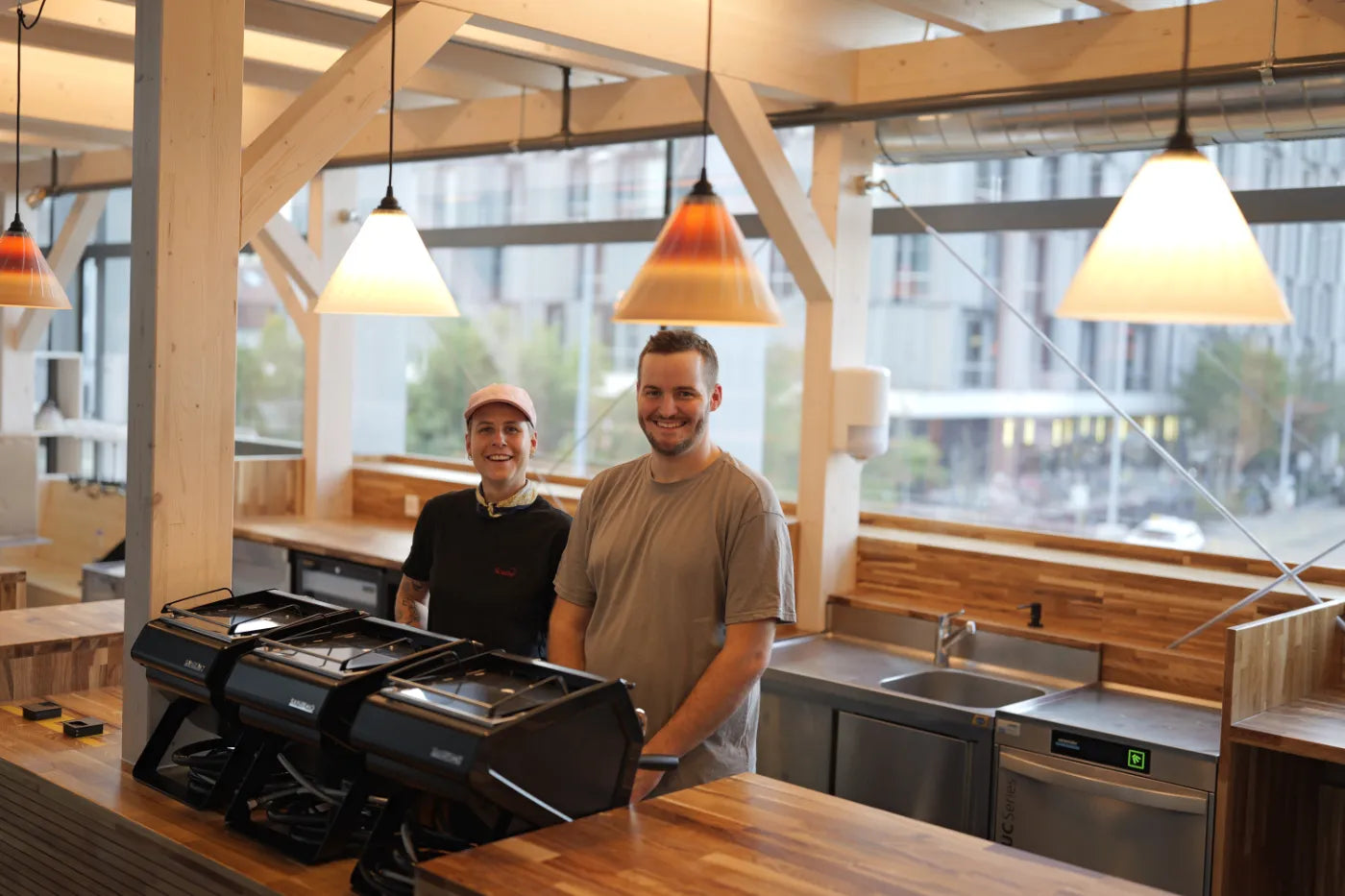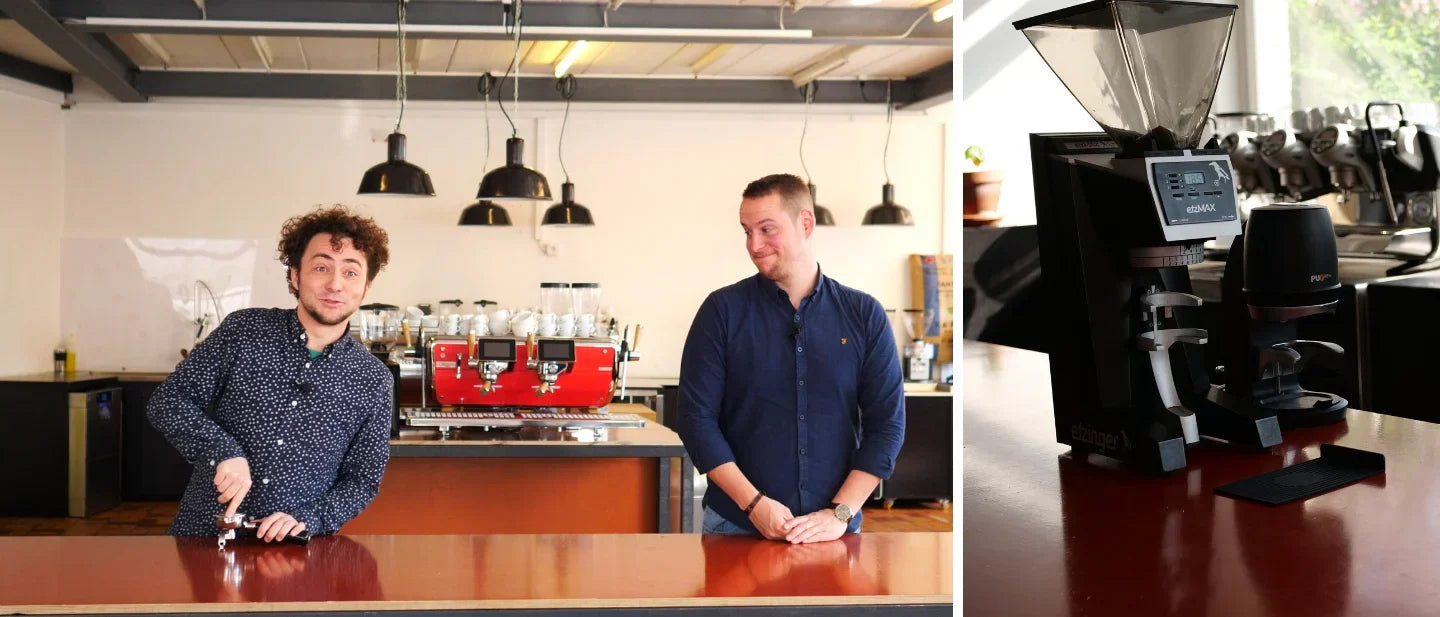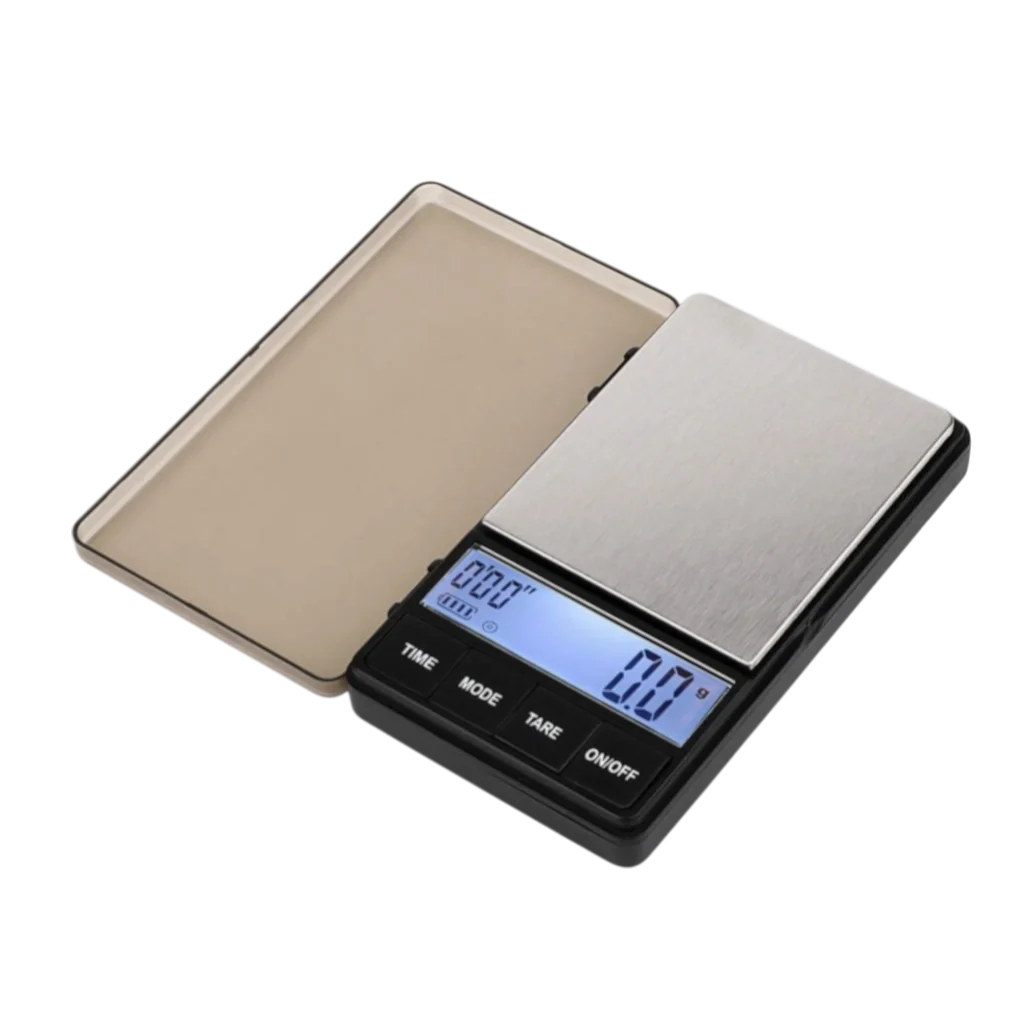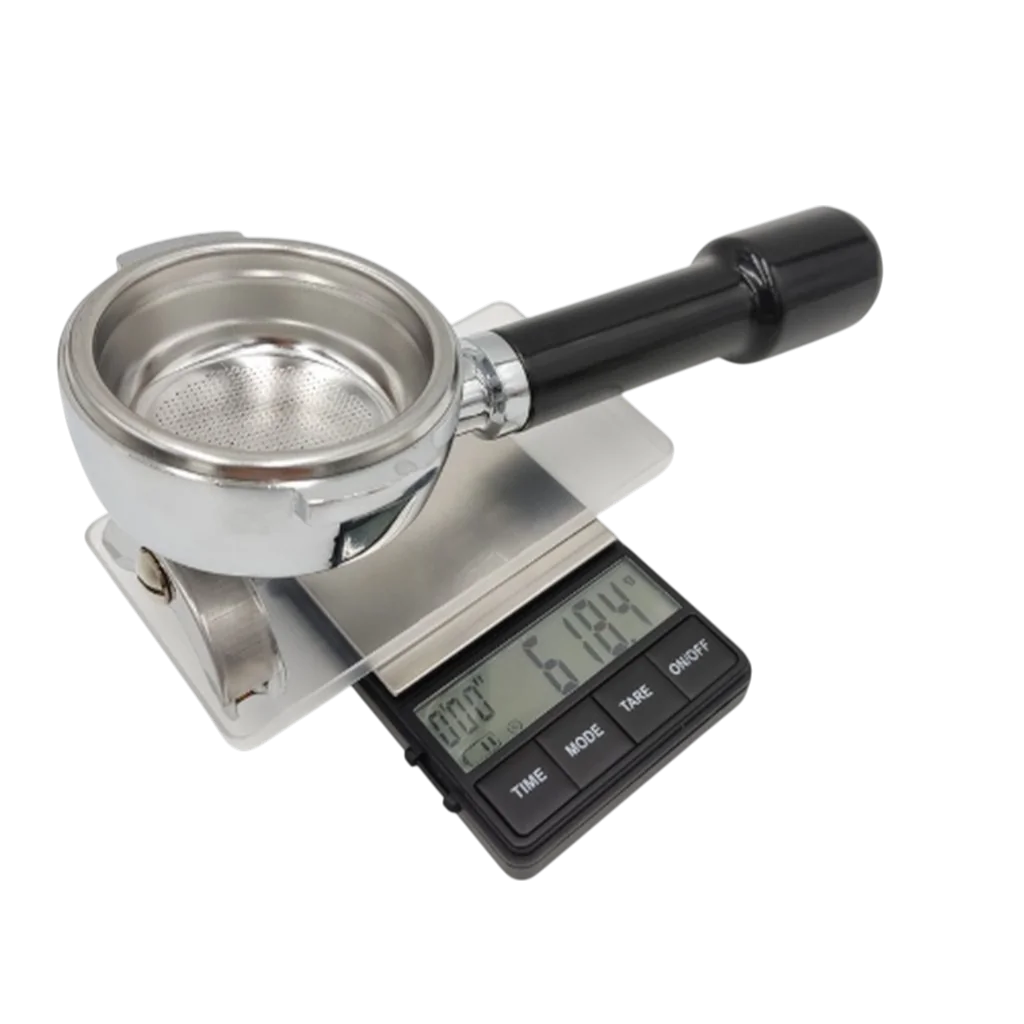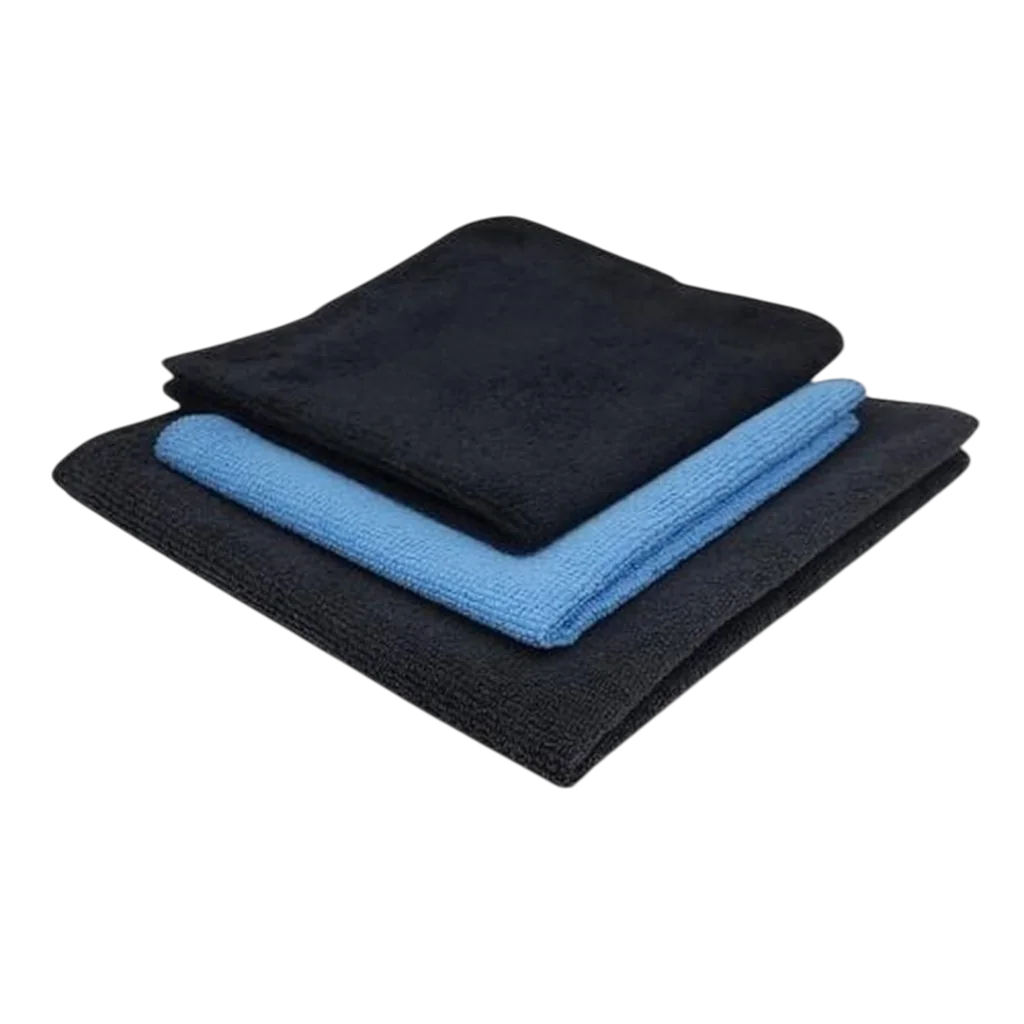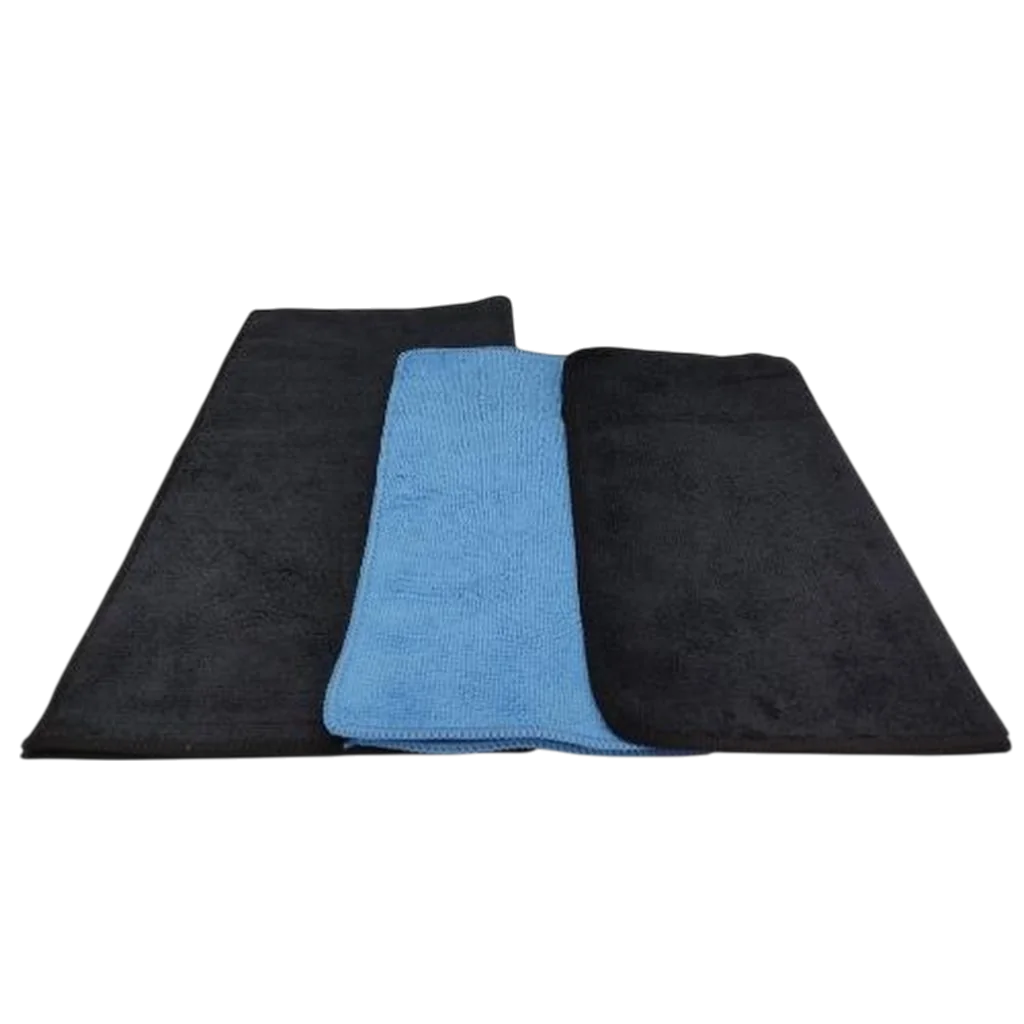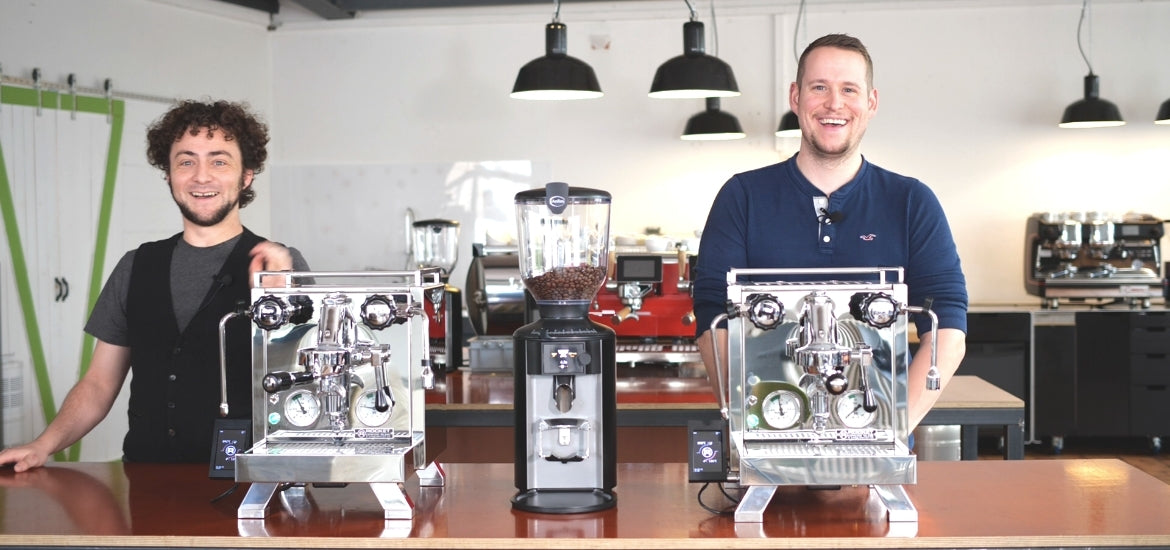The Rocket R Cinquantotto is the successor to the R58 dual boiler espresso machine. We take a look under the hood of the Rocket Cinquantotto and can't help but place it in the context of other espresso machines. For whom does investing in a dual boiler make sense? What is the added value of such an espresso machine, and how does the result reflect in the espresso cup?
An investment for life and in a lot of material
The Rocket R Cinquantotto weighs in at a whopping 29 kg, making it one of the heavyweights among home espresso machines. Plenty of stainless steel and two boilers, as well as a depth of 46 cm, a width of 31 cm, and a height of 42 cm, all contribute to this. When calculating the width, Rocket omits the display mounted on the left of the machine, which takes up a good 5 cm. While the display can be removed, its appearance is a significant improvement over the display of its predecessor, the R58. And since it also offers several practical functions, such as temperature control and the Eco mode setting, it will usually be hidden away on the machine. However, the long cable also allows the display to be hidden behind the machine.
The Rocket R Cinquantotto costs CHF 2,990 in Switzerland. In Europe, we've seen the machine for €2,499, for example, at Stoll Espresso . For the sake of completeness, we also sell the machine in Switzerland upon request. However, we conduct our test reports as a coffee school and academy and feel free to point out the flaws and strengths of each machine. In Switzerland, the Rocket R Cinquantotto is available from us , for example, at Philippe's Home Barista Shop in Aarau, from Flo's Kaffeewerkstatt in Zurich, or from Lukas in Märstetten at Kaffee-Erlebnis.ch.
The Rocket Cinquantotto with rotary pump can be connected to the mains water supply and also operated with a tank. The necessary connections are already attached and can be used without any problems, and a corresponding flexible hose is included.
The dual boiler principle using the Rocket R Cinquantotto as an example
Dual-boiler espresso machines are a distinct type of machine. They differ from dual-boiler and single-boiler machines in that, as the name suggests, they have an additional boiler. A generally smaller boiler is reserved for the precise temperature of around 93 degrees Celsius for the brewing water. Another larger boiler provides the steam pressure needed to froth the milk. The temperature of the larger boiler reaches between 120 and 130 degrees Celsius.
The Rocket R Cinquantotto's brewing boiler holds 0.58 liters, and the steam boiler holds 1.75 liters. In the case of the R Cinquantotto, both boilers are made of copper. The major advantage of a dual boiler is the ability to control the temperature of the boilers independently. This allows you to achieve the perfect brewing temperature without compromising on steam power.
For this reason, dual-boiler espresso machines were, in principle, the best espresso machines for precise espresso preparation for years. In the field of commercial machines, this technology was taken to the extreme by Dalla Corte in 2001 with the multi-boiler approach. A separate boiler, with individually adjustable temperature, was installed above each group with a portafilter attachment.
The Rocket R Cinquantotto does a good job when it comes to individual temperature adjustment and group set-up. One downside, however, is that a potential offset cannot be adjusted.
But what about temperature consistency, and is the Cinquantotto also a machine that allows you to quickly try out different temperatures and brew different espressos with precision?

6 espresso shots in a row with the Rocket R Cinquantotto.
Advantages and disadvantages of inertia – temperature constancy
Let's start with that. We drank some fantastic espressos. The Rocket R Cinquantotto can be set to the perfect temperature and then performs flawlessly. The average perfect espresso brewing temperature is around 92–94 degrees Celsius, and our model reached that. Not only was the machine very precise in its extraction, but it also only increased the temperature by a total of 1.2 degrees over five consecutive extractions. That's a top value and really allows for many good extractions in a row, even when there's a large crowd or in a small restaurant setting.
However, the espresso machine is very slow. This is common to all espresso machines with a Faema E61 brewing group and the relatively large boiler principle. It takes 25 minutes for everything to heat up before the first brew. This slowness is reflected in the consistency from brew to brew. If we compare the Rocket R Cinquantotto with an inexpensive thermoblock espresso machine, the latter looks like a beating heartbeat. The dual boiler, in contrast, is a smooth line at the right temperature.

Temperature curves Sage Barista Touch with cold portafilter on low, Prima by Victoria Arduino and Cinquantotto.
However, this slowness has another disadvantage. While the Cinquantotto's temperature can be easily adjusted via the display, it takes time to achieve the new target value. An upward adjustment can be achieved relatively quickly with one or two empty brews, while a downward adjustment requires considerably more patience.
This is where the Rocket R Cinquantotto highlights the limitations of the classic dual boiler. The immense heated material is not flexible and is available at different temperatures from brew to brew. Its quality lies in its stability and consistency. For this reason, a dual boiler can operate at different temperature ranges. As a machine for playing, experimenting, or as a partner to a single-dose grinder, with the goal of experimenting and trying out different recipes and temperatures, the Rocket R Cinquantotto is only conditionally recommended.
The independence of the flexible steam boiler and latte art
My fellow barista, Michel Aeschbacher, raves about the Cinquantotto's steam performance in our detailed video. A lot of power is pumped into the jug, yet the milk doesn't heat up too quickly. This makes frothing for latte art and preparing cappuccinos and latte macchiatos a joy. The slower heating time allows for longer frothing during the rolling phase, thus creating a delicate milk foam.
If the pressure is too high or too low, the steam boiler's individual controls can be used to correct the problem. It's a bit of a shame that the maximum temperature is 126 degrees Celsius. This is less of a problem for domestic use than for the aforementioned use in small-scale catering.
A little more pressure would equate to more speed. This would speed up preparation and get the beverage to the customer faster. The milk performance of the Rocket R Cinquantotto is therefore only recommended to a limited extent for the hospitality industry. Here, it's clear that machines like the GS3 from La Marzocco or the Victoria Arduino Prima, with their catering components, are much better suited.
Lots of power but good ECO mode replacement
During the hour of heating up, which includes five espressos, the Cinquantotto consumes 0.38 kW/h. That's quite a lot. An Ascaso Steel Duo PID consumes a quarter of that at 0.09 kW/h. After 90 minutes of non-use, the Cinquantotto automatically switches to ECO mode and shuts off.
A forthcoming test on power consumption and eco mode will recommend turning off the machine immediately after use if no espresso is expected to be brewed for the next two hours. The Rocket R Cinquantotto offers additional options for this thanks to its display control. For example, two time slots per day can be programmed for when the machine should turn on and off. Very practical and especially effective for an espresso machine that takes a good 25 minutes to heat up. This way, it's ready when it's time to brew your daily morning espresso.
Conclusion and for whom the Rocket R Cinquantotto is the right machine
An investment in the Cinquantotto is a long-term investment that will pay for itself over many years. The manufacturer, Rocket, builds solid machines that will last forever. Other manufacturers, who build cheaper machines with equivalent espresso performance, have yet to prove this.
Nevertheless, the question remains as to what justifies an investment in a Cinquantotto, even if one only considers one's own house with Mozzafiato and Appartamento .
The Appartamento's temperature consistency is almost equivalent. The Mozzafiato is also on the move and can still be controlled via PID in the temperature range, although the heat-up time was longer in our test. The significant difference in the Cinquantotto's temperature individuality becomes particularly apparent when the temperature needs to be set for brewing. However, the sluggishness is a hindrance here, even though the display suggests flexibility. In practice, the temperature will probably be slightly adjusted for a single espresso bag, which can produce an even better result in the cup. However, this is a heightened sensory assessment that we, as coffee sensory experts, rarely reach in everyday life.
In my opinion, the R Cinquantotto isn't really suitable for baristas who have several espressos open at the same time and want to serve one profile to one customer and another to another. There are much better espresso machines out there, like the Decent Espresso , that allow for different pressure and flow profiles in addition to temperature settings.
